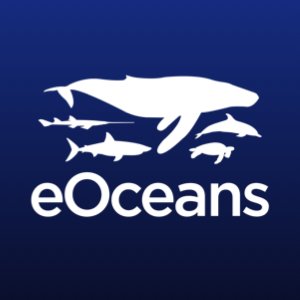North Atlantic Right Whale
The North Atlantic right whale (Eubalaena glacialis) is one of the world's most critically endangered marine mammals. Known for its large size, distinctive callosities, and baleen plates, this whale is a key species in the North Atlantic ecosystem. Once a common sight in these waters, the North Atlantic right whale now faces severe threats due to human activities and environmental changes, making its conservation a top priority.
Lifespan: Typically 60 to 70 years, with some individuals possibly living over 100 years
Maximum Size:
Males: Up to 50 feet (15 meters) in length and 70 tons (63,000 kg) in weight
Females: Slightly larger, reaching up to 55 feet (17 meters) in length and 75 tons (68,000 kg) in weight
Speed: Capable of swimming at speeds of up to 10 miles per hour (16 km/h)
Diet: Filter feeder, primarily consuming zooplankton such as copepods and krill using its baleen plates
Reproduction: Oviparous, with a calving interval of 3 to 5 years
Clutch Size: Females give birth to a single calf
Calf Size: Newborn calves are approximately 15 feet (4.5 meters) in length and weigh around 2,000 pounds (900 kg)
Habitat: Prefers temperate and subarctic waters, typically found in areas with abundant zooplankton and relatively calm seas
Distribution: Historically ranged throughout the North Atlantic Ocean; currently, populations are concentrated off the eastern coast of North America, particularly in the waters off the southeastern United States and the Bay of Fundy in Canada
Notable Populations: The majority of the North Atlantic right whale population is found off the southeastern coast of the United States and in the Bay of Fundy, Canada
Migration: Undertakes seasonal migrations between feeding grounds in the cold waters of the North Atlantic and breeding grounds in the warmer waters off the southeastern United States
Social Structure: Generally solitary or found in small, loose groups; known for its distinctive vocalizations and communication methods
Conservation Status: Critically Endangered (IUCN Red List)
Threats: Major threats include ship strikes, entanglement in fishing gear, habitat degradation, and the impacts of climate change
Protection Measures: Conservation efforts include implementing ship speed restrictions in critical habitats, developing and enforcing fishing gear modifications to reduce entanglement risks, and conducting regular population surveys and research
Unique Adaptations:
Callosities: Unique patterns of roughened skin, called callosities, on the head which are used for individual identification and are home to tiny crustaceans
Baleen Plates: Uses baleen plates to filter feed on small planktonic organisms; these plates are capable of filtering large volumes of water to capture prey
Large Size: Its large size provides advantages in energy efficiency for long migrations and feeding in nutrient-rich waters
Research Highlights:
Population Monitoring: Ongoing efforts to track and monitor population numbers, health, and distribution to inform conservation strategies
Behavioral Studies: Research on feeding behavior, vocal communication, and social interactions to better understand the species' needs and threats
Human Impact Studies: Analysis of the effects of ship traffic, fishing practices, and climate change on whale health and survival
Interesting Facts:
Distinctive Calls: Known for their deep, low-frequency vocalizations that can travel long distances underwater and are used for communication between individuals
Historical Significance: Once a target of extensive whaling, which led to their critical endangered status; conservation efforts are now focused on recovery and protection
Cultural Importance: Featured in various marine conservation efforts and educational programs highlighting the need for continued protection and research
Ecotourism: Opportunities for observing North Atlantic right whales in their natural habitats, with guided tours that emphasize conservation and responsible viewing practices
Join Us!
Join eOceans and log your observations in the eOceans mobile app to help drive understanding and conservation efforts. By contributing your sightings you can make a real difference. Together, we can enhance our knowledge and necessary protection of our ocean.




